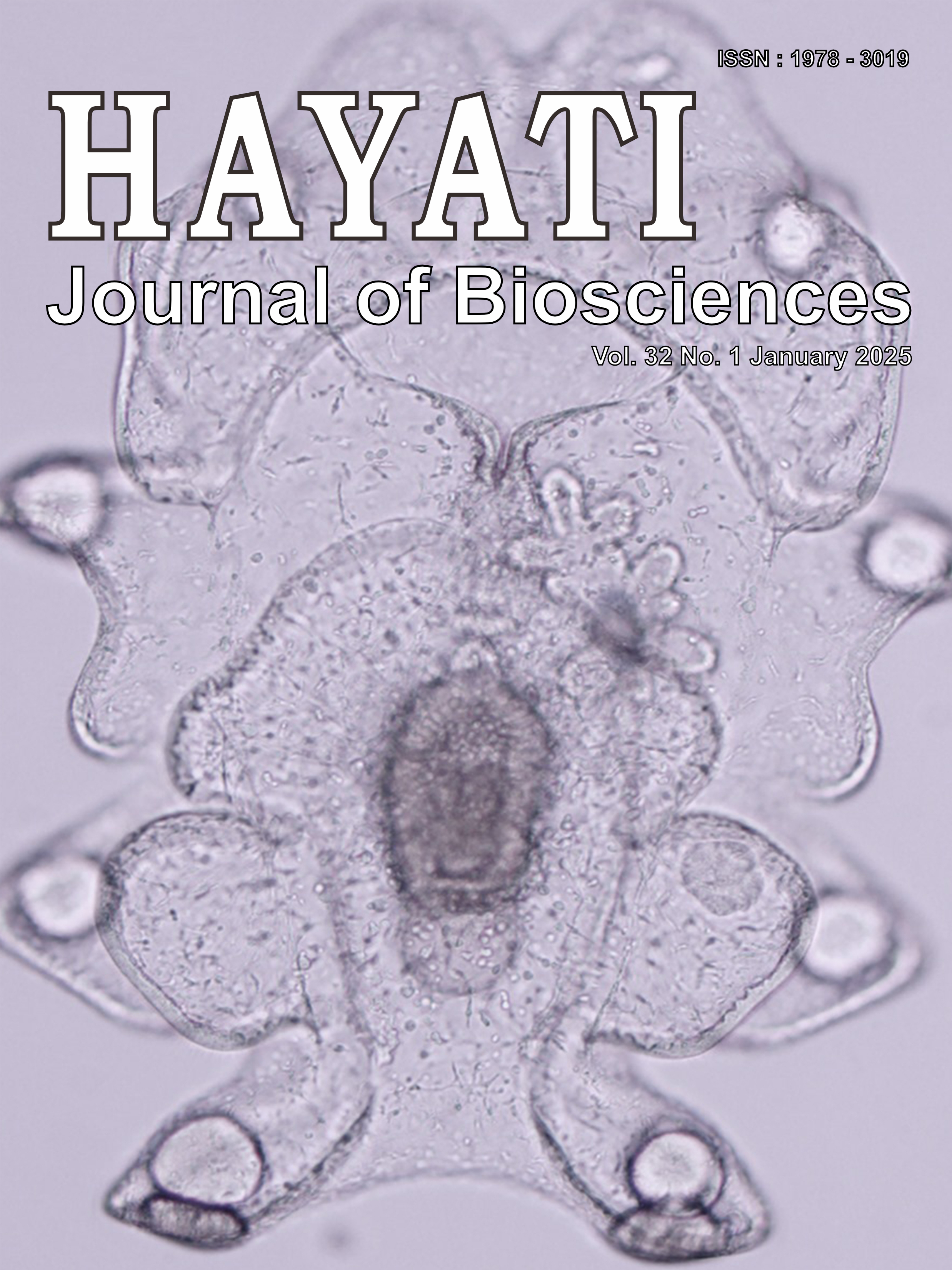Assessment of Genetic Diversity Using Morphological and Molecular Characteristics of Indonesian Zoysiagrass Genotypes
DOI:
https://doi.org/10.4308/hjb.32.1.263-277Abstract
Zoysiagrass is warm-season turfgrass thriving in tropical regions. Despite the adaptive nature, the existence of Indonesian zoysiagrass as well as morphological and genetic characteristics are not available. Therefore, this study aimed to explore Indonesian zoysiagrass from western and eastern parts of the country, as well as its morphological and molecular characteristics. Morphological characteristics was conducted to measure vegetative and reproductive characters while genotyping was performed using 15 simple sequence repeat markers. Morphological characteristics cluster three major groups, namely Group 1 corresponded to short, shorter, and fine leaves. Group 2 corresponded to tall, longer, and fine leaves, fewer seeds, and short spikelet, while Group 3 corresponded to tall, long, and wider leaves, more seeds, and longer spikelet. The results showed that the expected heterozygosity (He = 0.256) was lower than homozygosity (Ho = 0.341). The high level of discriminating capacity, polymorphism, and informativeness of SSR marker was observed (Effective Multiplex Ratio = 4.20, Marker Index = 2.394, and Resolving Power = 1.574). Additionally, population structure generated two subpopulations. Group 1 corresponded to Z. japonica from Sumatera Island and mixed province while Group 2 corresponded to Z. japonica from Central Java and Bali with Z. japonica and Z. matrella from mixed province. In conclusion, the exploration of morphological and genetic diversity from Indonesian zoysiagrass provided useful insight for conservation and future breeding improvement.
Downloads
Downloads
Published
Issue
Section
License
HAYATI J Biosci is an open access journal and the article's license is CC-BY-NC. This license lets others distribute, remix, tweak, and build upon author's work, as long as they credit the original creation. Authors retain copyright and grant the journal/publisher non exclusive publishing rights with the work simultaneously licensed under a https://creativecommons.org/






















.png) Bogor Agricultural University
Bogor Agricultural University Department of Biology
Department of Biology The Indonesian Biological Society
The Indonesian Biological Society 

